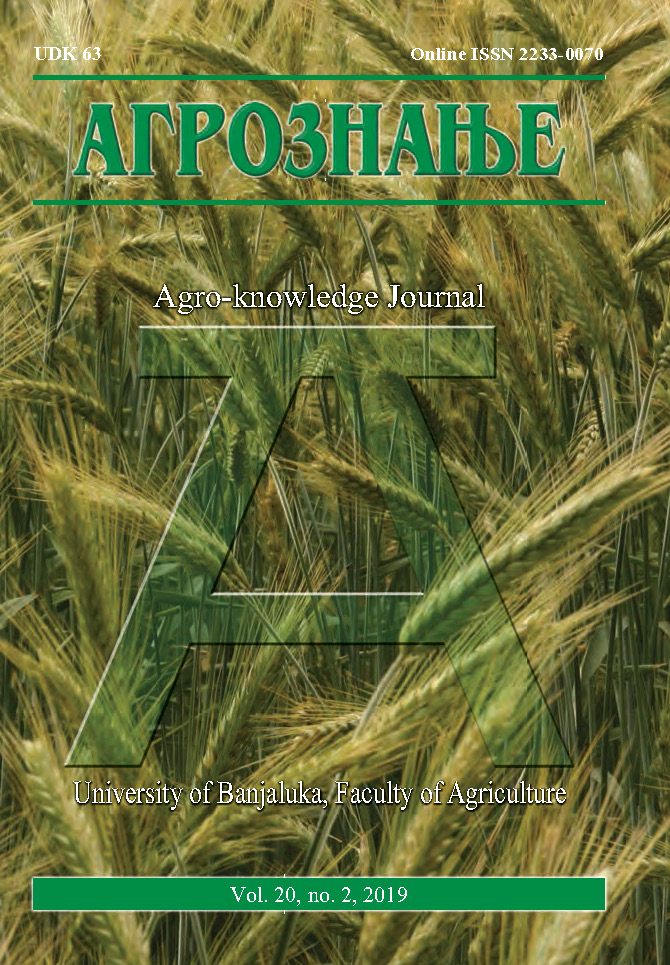Comparison of Aeroponics and Conventional Production System of Virus-free Potato Mini Tubers in Serbia
DOI:
https://doi.org/10.7251/AGREN1902095BAbstract
Virus free mini tubers are starting materials for the production of seed potatoes without the diseases. Conventionally, mini-tubers are produced from in vitro plants in various solid media. The aeroponics system refers to the process of growing plants in the air or in the fog environment without the use of soil or any other substrate. The aim of this study is to assess the application of aeroponics and conventional production system of virus-free potato mini tubers in Serbia. The experiment included three varieties of potatoes: Cleopatra, Kennebec and Agria. All three varieties were cultivated within two systems: aeroponics and conventional rooting in the substrate. In the aeroponics system, with all three varieties, an average of 17.87 mini tubers was obtained, which is 5.39 times more than in the conventional substrate. This ratio was the highest in the variety Kenebec (6.46), followed by Agria (5.71) and the lowest in Cleopatra (4.01). The average weight of mini tubers produced in the conventional substrate was higher by 3.49 g compared to the aeroponics system. The aeroponics system offers a potential opportunity to improve the production of mini potato tubers in Serbia.

